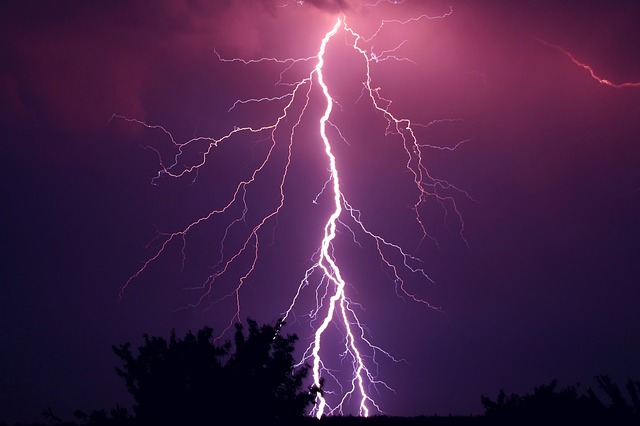
Lightning Safety for Outdoor Workers
Strong storms can be a concern for any employer, but businesses that have employees who frequently work outdoors also need to consider the substantial risks of lightning. According to the National Oceanic and Atmospheric Administration, there are approximately 25 million cloud-to-ground lightning strikes in the United States every year.
Although about 90 percent of people struck by lightning survive, these discharges can cause serious and permanent disabilities. And, even if your employees aren’t hurt by lightning, they may be at risk from any fires, explosions or other hazards that result from a strike.
If employees at your business work outside, you need to take steps to reduce lightning hazards, create an emergency action plan and train your workforce.
Recognizing Increased Lightning Risks
Lightning is usually unpredictable and can occur both during heavy storms and in the complete absence of any rain. However, employees in certain roles or locations are at greater risk. Tasks that frequently expose employees to lightning include:
- Roofing
- Logging
- Construction, especially around scaffolding
- Steel structure and tower construction
- Utility field repair
- Lifeguarding
- Field labor
Some locations are also more likely to attract lightning strikes, including open fields, towers and tall trees.
Reducing Outdoor Lightning Hazards
The best way to protect your employees from lightning strikes is to have a plan in place before they’re exposed to dangerous conditions. All of your managers, supervisors and outdoor workers should collaborate on your plan to ensure it accounts for your business’s unique operations. You should also consider how your plan should be adapted for multiple workplaces if any employees work at different worksites.
Consider these tips when you’re drafting your plan:
- Train all employees on lightning safety, including early warning systems for severe weather and the best locations to take shelter when working outdoors.
- Post information on lightning safety around all of your outdoor work areas. These postings should indicate the location of safe shelters, when to stop and resume work after hearing thunder, and any other guidance that applies to your business or worksites.
- Make sure employees check weather reports before working outside. Employees should also check the weather at each worksite they’ll be visiting each day, as weather patterns can vary widely—even over short distances.
- Require employees and supervisors to monitor weather reports regularly once they’re at an outdoor worksite.
- Have employees stop work and seek shelter immediately if they hear any thunder.
- If a safe indoor structure isn’t available, have employees use a hard-topped metal vehicle as shelter.
- Set a mandatory length of time for stopping and restarting work after a lightning strike. Most lightning-related injuries and deaths occur because victims don’t seek shelter quickly enough or go back outside assuming the lightning storm is no longer a risk. The length of time before work can continue may vary based on your business and operations, but it should be at least 30 minutes after hearing the last sound of thunder.
Emergency Action Plans
Although reducing your lightning risks before a storm will help safeguard your employees, no plan can account for everything. Your business should also have an emergency action plan that gives employees specific guidance to help protect them from lightning strikes.
Your emergency action plan for lightning should encourage employees to do the following:
- Use any available early warning systems to detect lightning.
- Inform supervisors or co-workers if any thunder is heard.
- Avoid seeking shelter in small structures that won’t offer protection from lightning, such as sheds, pavilions and tents.
- Move away from any tall objects. Employees should never be the tallest object in an area if there’s a chance of lightning.
- Avoid open areas, such as fields.
- Find an area of dense, small trees that’s surrounded by larger trees or structures. However, employees should watch out for fires caused by lightning strikes or flooding from thunderstorms.
- Avoid wiring, plumbing, fencing and all other metal objects that could conduct electricity.
For more resources to help keep your outdoor workers safe, call 831-661-5697 today.

Comments
Not found any comments yet.